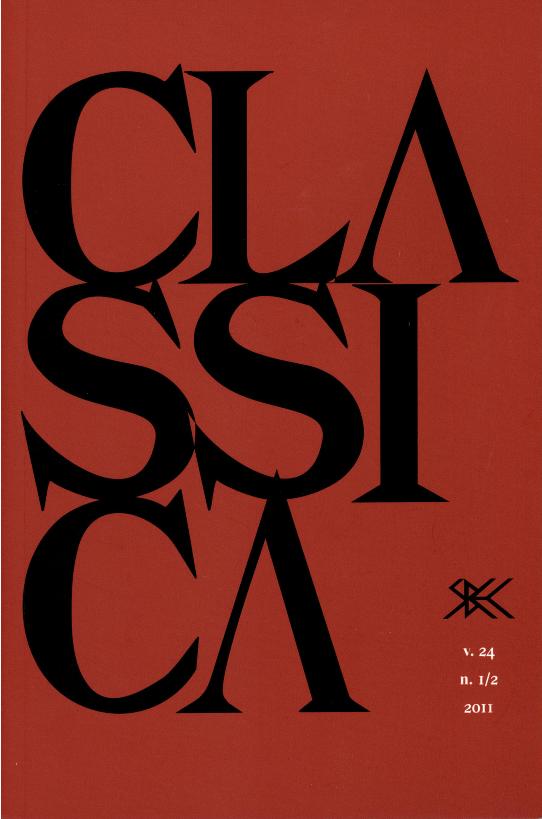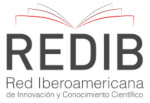Sigmund Freud’s Experience with the Classics
DOI:
https://doi.org/10.14195/2176-6436_24_4Palavras-chave:
Freud, catharsis, Aristotle, Vergil, Rome.Resumo
Classical culture played an important role in the work of Sigmund Freud and influenced the formation of psychoanalysis. This influence concerned several aspects of Freud’s experience: the personal one, from his adolescent identification with ancient heroes to his emotional bond with Rome and Athens; the intellectual, including his use of authors such as Aristotle and Artemidorus the elaboration of psychoanalytical theory; rhetorical and expositive in his use of classical authors such as Sophocles and Vergil, and in his strategy of identifying thinkers such as Plato and Empedocles as forerunners of his theories. The present article reconstructs the evolution of this strategy, which began in 1900, in conjunction with the definition of the basic concepts of psychoanalysis. Some specific episodes of Freud’s approach to the classics are also examined: his reception of Aristotle’s concept of catharsis, and of the interpretation of this concept given by Bernays; Freud’s interest in Vergil, highlighted by his use of verses from the Aeneid in his works; his conflictual relationship with Rome; the use of Empedocles as a predecessor of the changes that Freud made, in his last years, to the theory of pulsions.Downloads
Referências
ARISTOTELES. Poetik. Hrsg. von Th. Gomperz. Mit einer Abhandlung Wahrheit und Irrtum in der Katharsistheorie des Aristoteles von A. von Berger. Leipzig: Veit & Comp., 1897.
ARMSTRONG, R. H. A Compulsion for Antiquity. Freud and the Ancient World. Ithaca; London: Cornell University Press, 2005.
BERNAYS, J. Zwei Abhandlungen über die aristotelischen Theorie des Drama. Berlin: Wilhelm Hertz, 1880.
BETTELHEIN, B. Freud and Man’s Soul. New York: Vintage, 1983.
BRUNNER, R. Freud et Rome. Paris: L’Harmatan, 2011.
CALDWELL, R. S. Selected Bibliography on Psychoanalysis and Classical Studies, Arethusa, v. 7, p. 115-134, 1984.
FREUD, Sigmund. Sein Leben in Bildern und Texten. Hrsg. von E. Freud, L. Freud, L. Grubich-Simitis. Frankfurt a.M.: Suhrkamp, 1976.
GAMWELL, L.; WELLS, R. (Ed.). Sigmund Freud and Art: His Personal Collection of Antiquities. London; New York: Harry N. Abrams, 1989.
GAY, P. Freud: a Life for our Times. London; New York: W. W. Norton, 1988.
GLEI, R. F. Freud und die Antike – oder: Hätte Ödipus einen Ödipus-Komplex?. In: EFFE, von B.; R. F. Glei, R. F. (Hrsg.). Genie und Wahnsinn. Konzepte psychischer ‘Normalität’ und ‘Abnormalität’ im Altertum. Trier: [s.n.], 2000.
GLENN, J. Freud, Vergil, and Aeneas: An Unnoticed Classical Influence on Freud. The American Journal of Psychoanalysis, v. 47, p. 279-281, 1987.
GÖDDE, G. Therapeutik und Ästhetik – Verbindungen zwischen Breuers und Freuds kathartischer Therapie und der Katharsis-Konzeption von Jacob Bernays. In: VÖHLER, von M.; LINCK, D. (Hrsg.). Grenzen des Katharsis in den modernen Künsten. Transformationen des aristotelischen Modells seit Bernays, Nietzsche und Freud. Berlin; New York: De Gruyter, 2009.
GRAFTON, A. Commerce with Classics. Ancient Books and Renaissance Readers. Ann Arbor: University of Michigan Press, 1997.
HIRSCHMÜLLER, A. Physiologie und Psychoanalyse in Leben und Werk Joseph Breuers. Bern: H. Huber, 1978.
LÖWY, Emanuel. Ein vergesser Pionier. Hrsg. von F. Breined. Wien: Universität Wien, 1998.
MASSON, J. M. (Ed.). The Complete Letters of Sigmund Freud to Wilhelm Fliess. Cambridge, Mass.: Cambridge University Press, 1985.
McGRATH, W. J. Freud’s Discovery of Psychoanalysis. Ithaca, NY: Cornell University Press, 1986.
MITCHELL-BOVASK, R. N. Freud’s Reading of Classical Literature and Classical Philology. In: GILMAN, S. L. et al. (Ed.). Reading Freud’s Readings. New York: New York University Press, 1994. p. 27-28.
MOLNAR, M. John Stuart Mill translated by Sigmund Freud. Psychoanalysis and History, v. 1, p. 195-205, 1999.
OLLIENSIS, E. Freud’s Rome. Psychoanalysis and Latin Poetry. Cambridge: Cambridge University Press, 2009.
ORNSTON, D. Gray (Ed.). Translating Freud. New Haven, Conn.; Londres: Yale University Press, 1992.
OUDAI CELSO, Y. Freud e la filosofia antica. Torino: Bollati Boringhieri, 2006.
SANTAS, G. Plato and Freud: Two Theories of Love. Oxford; New York: Wiley-Blackwell, 1988.
SIMON, B. Plato and Freud: the Mind in Conflict and the Mind in Dialogue. Psychoanalytical Quarterly, v. 42, p. 91-122, 1973.
STOK, F. Freud, la filologia classica e la psicoanalisi. due to be published
STOK, F. Psychology. In: KALLENDORF, C. W. (Ed.). A Companion to the Classical Tradition. Malden, MA; Oxford: Blackwell. Publishing: 2007. p. 366-367.
STRACHEY, J. (Ed.). The Standard Edition of the Complete Psychological works of Sigmund Freud. London; New York: Hogarth Press; J. Aronson, 1953-1974. 24 v.
TIMPANARO, S. Freud’s Roman Phobia. New Left Review, v. 147, p. 4-31, Sept./Oct. 1984.
TRAVERSO, P. Psyche è una parola greca... Genova: Compagnia dei Librai, 2000.
VERNANT, J. P.; VIDAL-NAQUET, P. Myth and Tragedy in Ancient Greece. New York: Zone Books, 1988.
WORBS, M. Katharsis in Wien um 1900. In: VÖHLER, von M.; LINCK, D. (Hrsg.). Grenzen des Katharsis in den modernen Künsten. Transformationen des aristotelischen Modells seit Bernays, Nietzsche und Freud. Berlin; New York: De Gruyter, 2009.
Downloads
Publicado
Edição
Seção
Licença
Autores que publicam nesta revista concordam com os seguintes termos:
a. Autores mantém os direitos autorais e concedem à revista o direito de primeira publicação, com o trabalho simultaneamente licenciado sob a Creative Commons Atribuição 4.0 Internacional (CC BY 4.0) que permite o compartilhamento do trabalho com reconhecimento da autoria e publicação inicial nesta revista.
b. Autores têm autorização para assumir contratos adicionais separadamente, para distribuição não-exclusiva da versão do trabalho publicada nesta revista (ex.: publicar em repositório institucional ou como capítulo de livro), com reconhecimento de autoria e publicação inicial nesta revista.
c. Autores têm permissão e são estimulados a publicar e distribuir seu trabalho online após o processo editorial (ex.: em repositórios institucionais ou na sua página pessoal), já que isso pode gerar alterações produtivas, bem como aumentar o impacto e a citação do trabalho publicado (Veja O Efeito do Acesso Livre).
d. Autores autorizam a cessão, após a publicação, de seu conteúdo para reprodução em indexadores de conteúdo, bibliotecas virtuais, bases de dados de acesso público e similares.











